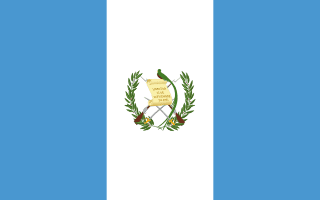
Guatemala lies between the volcanoes and lakes of Central America, a land layered with time. Ancient stones, vibrant markets, colonial echoes, and indigenous whispers all intertwine here. The country is a meeting point of worlds: the mathematical minds of the Maya, the echoes of Spanish conquest, and a modern society walking the bridge between past and present.
📌 Table of Contents
- Location and Flag
- Guatemala’s History: From Maya to Modernity
- Landmarks and Cultural Treasures
- The Pulse of Contemporary Guatemala
- Daily Life in the Highlands
- Glossary of Traditional Terms
📍 Location and Flag
Guatemala is situated in Central America, bordered by Mexico, Belize, Honduras, and El Salvador, with coastlines on both the Pacific Ocean and the Caribbean Sea. Its diverse geography includes lush jungles, towering volcanoes, and serene highland lakes.

The national flag features sky blue and white stripes, with the Quetzal bird—a symbol of freedom—perched over the scroll of independence. It represents peace, liberty, and Guatemala’s enduring sovereignty.
🏛️ Guatemala’s History: From Maya to Modernity
The roots of Guatemala stretch back to the powerful Maya civilization, which flourished for over two millennia. Known for its advanced astronomy, calendar systems, and monumental architecture, the Maya left behind enduring legacies in cities like Tikal—hidden deep within the jungle and crowned with stone temples touching the canopy.
Spanish conquest began in the 16th century, marking a profound transformation. Indigenous culture was suppressed, yet never fully extinguished. In 1821, Guatemala declared independence from Spain, later becoming a republic. The 20th century brought political upheaval, including a 36-year civil war, whose effects still ripple through society. Today, the country continues to heal while honoring both its ancestral roots and diverse communities.
🌄 Landmarks and Cultural Treasures
- Tikal – Nestled in the rainforest of Petén, this ancient Maya city rises dramatically above the treetops. Its stone pyramids, ceremonial plazas, and hieroglyphs tell stories of celestial order and dynastic power.
- Antigua – A colonial city framed by volcanoes, Antigua is paved in cobblestone and adorned with faded pastel facades. Time slows among its baroque churches, ruined monasteries, and blooming courtyards.
- Lake Atitlán – Encircled by volcanoes and dotted with indigenous villages, this lake is a jewel of Central America. Each village holds its own language, color palette, and rhythm, reflecting centuries of Maya tradition.
- Chichicastenango Market – A vibrant tapestry of textiles, incense, and prayer. This highland town bursts with color and devotion, especially during market days and local festivals steeped in syncretic rituals.
📊 The Pulse of Contemporary Guatemala
Today, Guatemala is a land of contrast and convergence. While agriculture remains vital—particularly in coffee, sugar, and bananas—the nation is also home to growing artistic, academic, and digital movements. Its people, more than 40% of whom identify as indigenous, continue to speak dozens of Mayan languages.
Guatemala’s coffee is revered globally. Grown in volcanic soil under cloud forests, it offers rich body and complex flavor profiles. Coffee cooperatives and micro-roasters are redefining the relationship between growers and the world.
Efforts to preserve Mayan heritage are gaining momentum: bilingual education, traditional medicine, and textiles are being recognized as national assets. Across city galleries and rural classrooms alike, there is a renewed sense of pride in identity.
🧍 Daily Life in the Highlands
In mountain villages, mornings begin with tortilla smoke curling from clay stoves. Men walk to fields or workshops, while women gather at community mills to grind maize. Children, wearing woven uniforms, make their way to multilingual schools.
Markets animate in the afternoon, filling streets with laughter, barter, and scent—papayas, chilies, and fresh tamales. In town squares, elders gather to exchange news in K’iche’ or Q’eqchi’. Evenings settle with candlelight and oral stories, passed down in rhythmic tones older than any flag.
Here, time is not merely clocked but lived—marked by harvests, festivals, and quiet rituals that bind family and earth.
📚 Glossary of Traditional Terms
| Term | Description |
|---|---|
| Quetzal | National bird symbolizing liberty; featured on the flag and currency |
| Tortilla | Flatbread made from maize; staple of the Guatemalan diet |
| Chichicastenango | Highland town known for its indigenous market and rituals |
| Maya Calendar | Complex timekeeping system combining lunar and solar cycles |
| Popol Vuh | Ancient text containing Maya creation myths and cosmology |
👣 Guatemala is a place where past and present speak side by side. Stone temples whisper to the stars while schoolchildren sing in ancestral tongues. It is not a land defined by monuments, but by motion—of breath, of memory, of continuity. To understand Guatemala is to listen not with ears, but with presence.
'세계를 읽다 > 방구석 세계걷기 195' 카테고리의 다른 글
| South America – Guyana, Where Rivers and Rainforests Breathe (0) | 2025.04.23 |
|---|---|
| 1편 남아메리카 – 가이아나(Guyana), 정글과 강이 숨 쉬는 땅 (0) | 2025.04.23 |
| 1편 북아메리카 – 과테말라(Guatemala), 마야의 숨결을 따라 걷다 (0) | 2025.04.22 |
| Africa – Ghana, Walking Through Gold and Cocoa (0) | 2025.04.22 |
| 1편 아프리카 – 가나(Ghana), 황금과 카카오의 기억 위를 걷다 (0) | 2025.04.22 |



